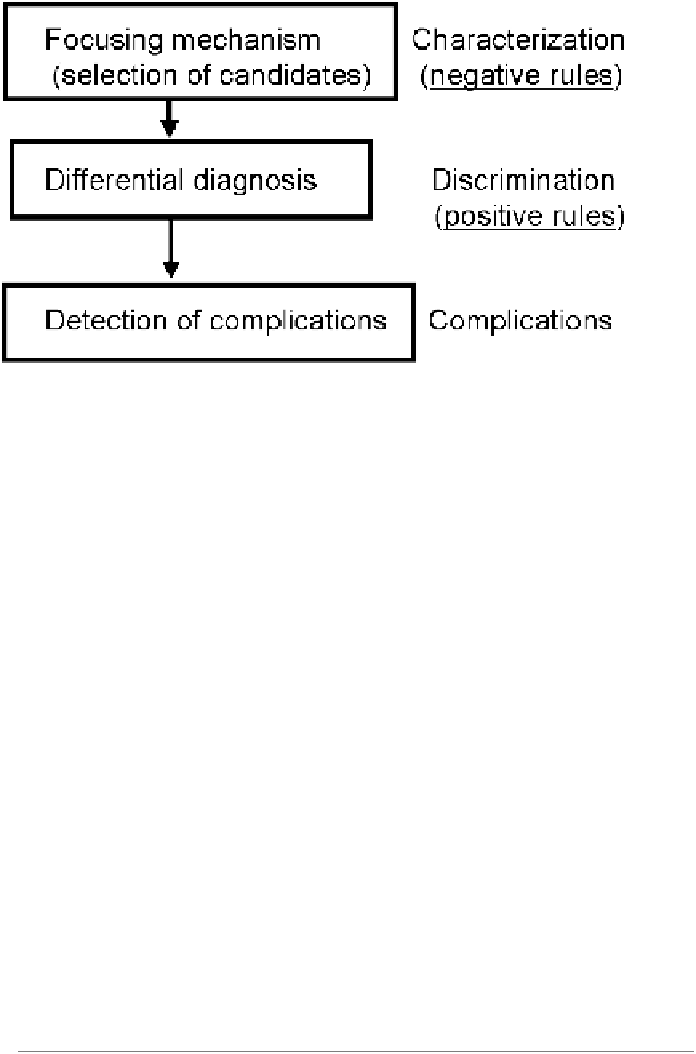Database Reference
In-Depth Information
9. Discovery of Positive and NegativeRules
235
Fig. 9.1.
Illustration of focusing mechanism.
9.3 Definition of Rules
9.3.1 Rough Sets
In the following sections, we use the following notation introduced by Grzymala-
Busse and Skowron [9.8], based on rough set theory [9.5]. These notations are
illustrated by a small data set shown in Table 9.1, which includes symptoms
exhibited by six patients who complained of headache.
Let U denote a nonempty finite set called the universe and A de-
note a nonempty, finite set of attributes, i.e., a : U
A,
where V
a
is called the domain of a, respectively. Then a decision table
is defined as an information system, A =(U, A
→
V
a
for a
∈
∪{
d
}
). For example,
Table 9.1 is an information system with U =
{
1, 2, 3, 4, 5, 6
}
and A =
{
age, location, nature, prodrome, nausea, M1
}
and d = class.Forlocation
∈
A, V
location
is defined as
{
occular, lateral, whole
}
.
Table 9.1.
Anexample of a data set.
No.
ge
Location
Nature
Prodrome
Nausea
M1
Class
1 -59
occular
persistent
no
no
yes
m.c.h.
2 -49
whole
persistent
no
no
yes
m.c.h.
3
40-49
lateral
throbbing
no
yes
no
migra
4 -49
whole
throbbing
yes
yes
no
migra
5 -49
whole
radiating
no
no
yes
m.c.h.
6 -59
whole
persistent
no
yes
yes
psycho
M1: tenderness of M1; m.c.h.: muscle
contraction headache; migra: migraine; psycho:
psychological pain.

Search WWH ::

Custom Search